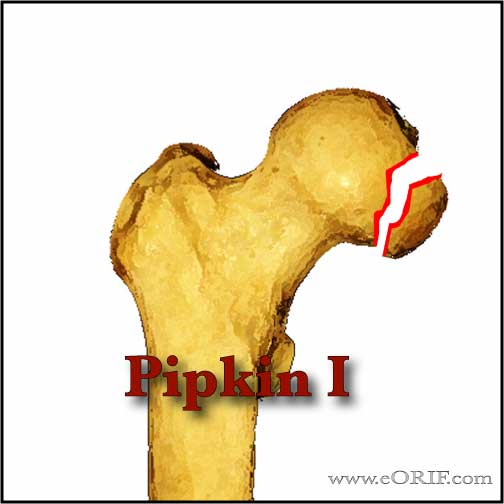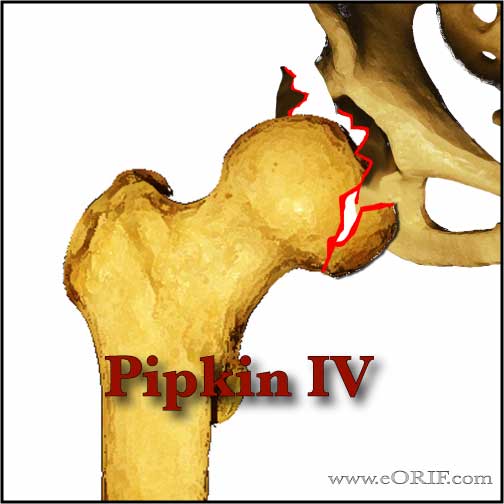|




|
synonyms:
Femoral Head Fracture ICD-10
A- initial encounter for closed fracture
B- initial encounter for open fracture type I or II
C- initial encounter for open fracture type IIIA, IIIB, or IIIC
D- subsequent encounter for closed fracture with routine healing
E- subsequent encounter for open fracture type I or II with routine healing
F- subsequent encounter for open fracture type IIIA, IIIB, or IIIC with routine healing
G- subsequent encounter for closed fracture with delayed healing
H- subsequent encounter for open fracture type I or II with delayed healing
J- subsequent encounter for open fracture type IIIA, IIIB, or IIIC with delayed healing
K- subsequent encounter for closed fracture with nonunion
M- subsequent encounter for open fracture type I or II with nonunion
N- subsequent encounter for open fracture type IIIA, IIIB, or IIIC with nonunion
P- subsequent encounter for closed fracture with malunion
Q- subsequent encounter for open fracture type I or II with malunion
R- subsequent encounter for open fracture type IIIA, IIIB, or IIIC with malunion
S- sequela
Femoral Head Fracture ICD-9
- 821.00(closed, unspecified)
- 820.09(closed, transcervical)
- 820.19(open, transcervical)
Femoral Head Fracture Etiology / Epidemiology / Natural History
- Mainly associated with hip dislocation, but can occur in isolation.
Femoral Head Fracture Anatomy
- Lateral epiphyseal artery, which is the terminal branch of the medial femoral circumflex artery of the profunda femoris circulation supplies the majority of the femoral head.(Trueta, JBJS 35B:442;1953).
- Blood supply to femoral neck=extracapsilar arterial ring at base of neck supplied by branches of lateral and medial femoral circumflex artery, ascending cervical branches of arterial ring on surface of the neck, arteries of the ligamentum teres.
- See also Hip anatomy.
Femoral Head Fracture Clinical Evaluation
- ATLS resuscitation. These can be high enegery injuries, assessment should begin with the A,B,C's.
- If associated with Posterior dislocation: present with leg flexed, adducted and internally rotated.
- If associated with Anterior dislocation: present with leg flexed, abducted and externally rotated.
- Document neurovascular exam before and after anyreduction.
- Knee ligamentous exam indicated.
Femoral Head Fracture Xray
- A/P pelvis, A/P and lateral of affected hip and femur. Consider inlet, outlet and Judet views if acetabular or pelvic ring injury is suspected.
- CT scan: assess for posterior pelvic ring injury, femoral head fracture, intra-articular fragments, impaction, acetabular fracture.
- MRI: indicated for patients with hip pain 3 months after hip dislocation to evaluated for osteonecrosis.
Femoral Head Fracture Classification / Treatment
- Pipkin Classification
Type I : femoral head fracture inferior to the fovea centralis
-Nondisplaced: NWB until fracture union
-Displaced: excise if small, or ORIF
Type II: femoral head fracture that extends superior to the fovea centralis
-Treatment = ORIF via anterior Smith-Peterson approach, generally utilize headless screws.
Type III: femoral neck fracture that is associated with either a type I or type II femoral head fracture
-Young, active patient: ORIF of femoral neck and head fractures.
-Elderly, inactive patient: hemi or THA.
Type IV: acetabular fracture associated with either a type I or type II femoral head fracture.
-Treatment: ORIF of acetabular and femoral head fractures.
Basicercival Femoral Neck Fracture: fractures located just proximal to or at the intertrochanteric line.
-Treatment: DHS with superior antirotation screw.
- residual joint incongruity of >2mm or an unstable hip requires ORIF; generally anterior approach. Swiontkowski Thorp Hansen Operative management of displaced femoral head fractures. J Orthopaedic Trauma. 1992 Vol 6 No 4; 437
- AO Classification (AO Classification)
Femoral Head Fracture Associated Injuries / Differential Diagnosis
Femoral Head Fracture Complications
- Post-traumatic hip arthritis
- Osteonecrosis
- Neurologic injury
- Pain
- Loss of reduction
- Gait disturbance
- DVT / PE (Borer DS, JOT 2005;19:92).
- Heterotopic ossification:
Femoral Head Fracture Follow-up Care
Femoral Head Fracture Review References
|




